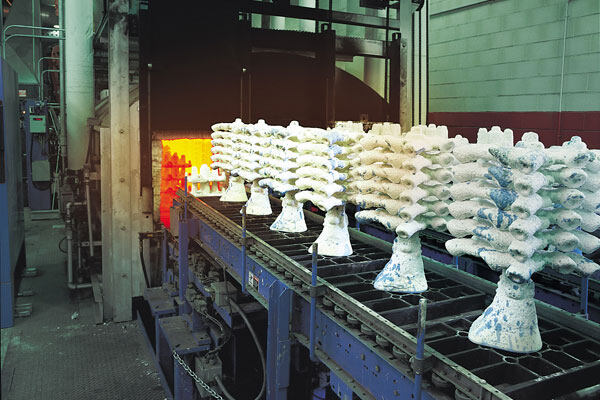Ralat format e-mel
emailCannotEmpty
emailDoesExist
pwdLetterLimtTip
inconsistentPwd
pwdLetterLimtTip
inconsistentPwd

Berita
casting wax,wax mold casting,lost wax sculpture
In the late Neolithic Age, more than 5,000 years ago, ancient Chinese craftsmen widely used the lost wax casting process in the manufacture of bronzes.
According to the characteristics of beeswax's plasticity and thermal volatility, the craftsmen at that time first carved the beeswax into a wax mold of the desired shape, then wrapped clay and reserved a small hole outside the wax mold, and baked it after drying to make the wax mold vaporize and volatilize.

At the same time, the clay becomes a ceramic shell, and the inner wall of the shell leaves a negative mold of the wax mold. At this time, the molten metal is injected into the shell along the small hole, and the shell is broken after cooling to obtain the required metal billet.
The basic principles of modern wax mold casting techniques are the same, but more sophisticated. This is mainly reflected in the stricter requirements for the precise shape and position of the wax model. The acquisition of wax mold in modern technology is not only the direct engraving of wax, but also the negative mold can be obtained by silicone molding of the metal original mold (plate), and then the wax mold can be obtained by injecting wax from the silicone negative mold. The casting material is no longer clay, but cast plaster instead. Such products are much finer than ancient castings.
What is the process of casting wax?
The process flow of lost wax casting is: pressing plastic mold → opening plastic mold → injecting wax (mold) → trimming wax mold → planting wax tree → filling gypsum cylinder → vacuuming gypsum → natural solidification of gypsum → baking gypsum → melting gold, casting → frying Gypsum→rinse, pickling, cleaning→cut blank.
Commonly used pouring methods in investment casting are:
1) Thermal gravity casting. This is the most widely used form of casting, that is, after the shell is removed from the roaster, it is cast at high temperature. At this time, the metal cools slowly in the mold shell, and the mold can be filled with high fluidity, so the casting can well replicate the shape of the cavity and improve the accuracy of the casting.
However, the slow cooling of the casting in the hot mold will cause coarse grains, which reduces the mechanical properties of the casting. When casting carbon steel castings, the surface of the casting that cools more slowly is also prone to oxidation and decarburization, which reduces the surface hardness, finish and dimensional accuracy of the casting.
2) Vacuum casting. Put the mold shell in the vacuum casting box, and suck the gas in the mold cavity through the tiny pores in the mold shell, so that the liquid metal can better fill the mold cavity, copy the shape of the mold cavity, improve the casting accuracy, and prevent insufficient porosity. At present, this method is widely used abroad.
3) Die casting method. Put the shell in the pressure tank for pouring. After the end, the pressure tank is closed immediately, and high-pressure air or inert gas is introduced into the tank to solidify the casting under pressure to increase the density of the casting. The maximum pressure abroad has reached 150atm.
4) Directional crystallization (directional solidification) Some investment castings such as turbine blades, magnetic steel, etc., if their crystalline structure is columnar crystals arranged in a certain direction, their working performance can be greatly improved, so investment casting directional crystallization technology is developing rapidly.
Some final words
Wax mold casting is a sophisticated process, all of which have been accumulated through the failures of our forefathers. In other words, a perfect lost wax sculpture need thousands of tests. We are a professional and leading casting wax manufacturer, for more information, please feel free to contact us.

